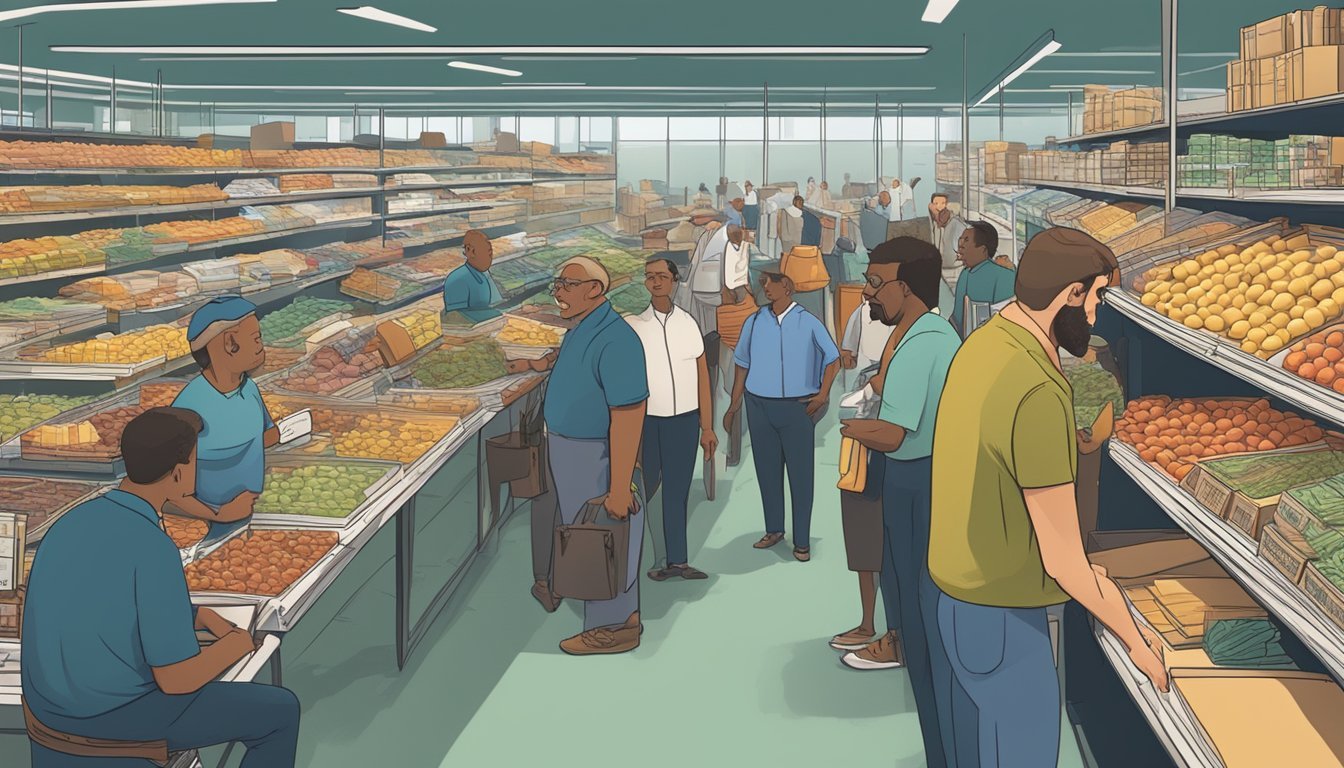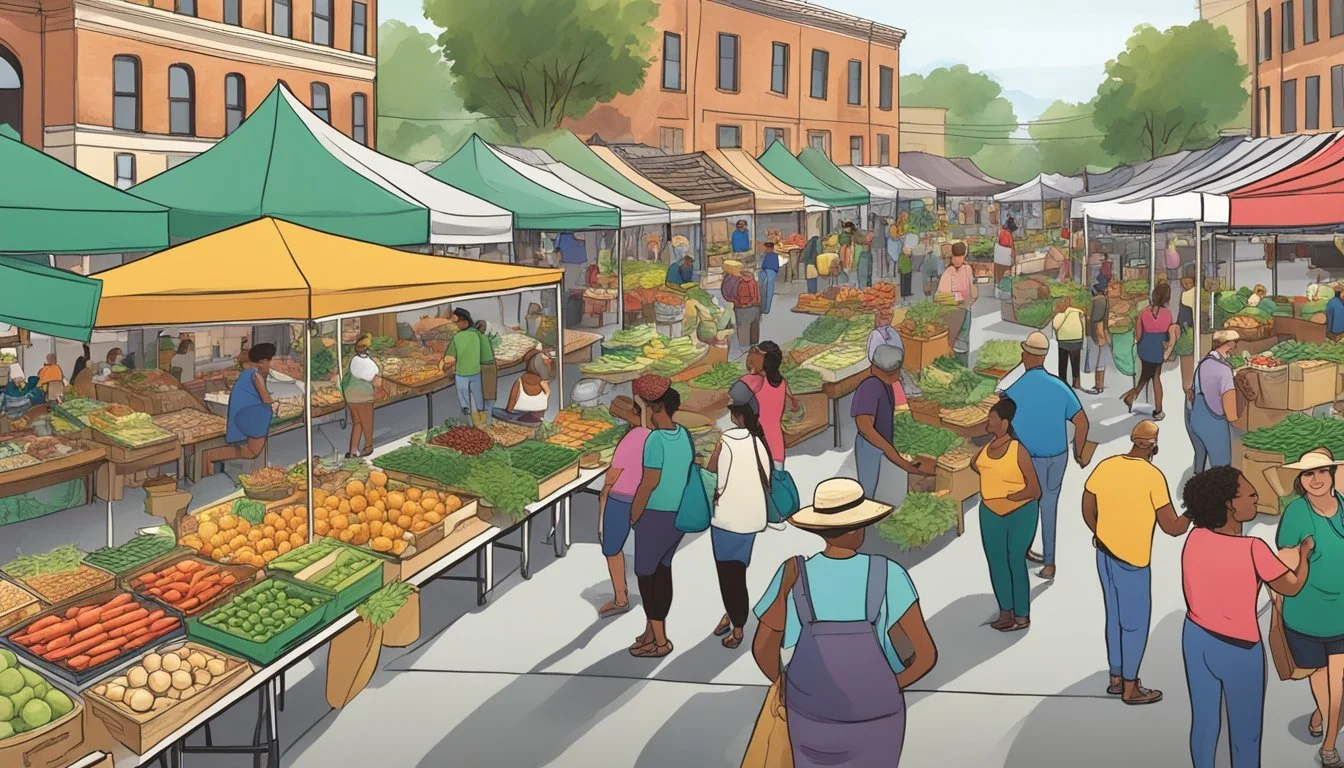Louisiana Food Challenges
Conquering the Bayou's Biggest Bites
Louisiana, known for its rich culinary traditions and diverse flavors, is a haven for food enthusiasts seeking to test their appetites with unique dining experiences. Food challenges across the state offer daring patrons the chance to immerse themselves in the local culture through extreme eating competitions. These challenges range from consuming vast quantities of signature Louisiana dishes to finishing spicy creations that test one's taste buds to their limits.
These gastronomic contests are not just about the size or the spice; they're a journey through the state's food heritage. Culinary adventurers will encounter dishes packed with Creole and Cajun influences, featuring ingredients like seafood (What wine goes well with seafood?) from the Gulf, Andouille sausage, and a variety of locally grown spices and produce. Food challenges in Louisiana present an opportunity to both feast and forge lasting memories, whether it's through tackling a mountainous plate of crawfish or a colossal po' boy sandwich.
Participation in these food challenges involves more than just eating; it's a chance to engage with the vibrant local communities and understand the pride Louisianians have in their food. As people take on these delicious trials, they become part of the celebratory spirit that surrounds Louisiana's food culture. From the bustling restaurants of New Orleans to the smaller eateries nestled in rural parts of the state, each challenge provides a glimpse into the state's shared love for good company and great food.
History of Louisiana Food Challenges
In Louisiana, food challenges have become a thrilling demonstration of culinary endurance and local tradition, spotlighting the state's rich flavors and culture.
Early Beginnings
Louisiana's food challenges trace back to a time when local restaurants began to create oversized servings of their popular dishes to attract both locals and tourists. These establishments capitalized on Louisiana's reputation for hearty and flavorful cuisine. An early example can be seen with gigantic po' boys, designed to push the envelope of appetite and provide an entertaining spectacle for diners.
Evolution of Challenges
As the concept gained popularity, Louisiana food challenges diversified in scale and creativity. These contests quickly escalated to include enormous portions of local specialties like jambalaya and crawfish étouffée. In recent years, challenges like the Tchoupitoulas Challenge have become iconic, pitting individuals against heaping bowls of ice cream topped with a variety of sweets—a true battle against both time and sugar.
Types of Food Challenges in Louisiana
Louisiana is known for its bold flavors and daring food challenges that test the appetite and resilience of locals and visitors alike. From shucking and gulping oysters (What wine goes well with oysters?) to devouring oversized burgers, the state's food contests are as diverse as its culinary heritage.
Oyster Challenges
In Louisiana, oyster challenges often involve speed and quantity. Contestants face heaping platters of these briny bivalves with the goal of consuming as many as possible in a set time frame. One popular event might task participants with slurping down dozens of oysters, competing for titles and sometimes charitable contributions.
Wing Challenges
Wing challenges in Louisiana turn up the heat, daring participants to handle wings coated in some of the spiciest sauces found in the South. These challenges aren't just about quantity but also about withstanding the intense flavors that Louisiana hot sauces are known for.
Burger Challenges
The burger challenges found in Louisiana present colossal stacks of patties, toppings, and buns. These gut-busting contests push competitors to their limits, with some burgers weighing in at several pounds, layered high with traditional fixings and Louisiana's unique twist, such as spicy Cajun sauce or andouille sausage.
Ice Cream Challenges
Even the sweet tooth gets a test in Louisiana. Ice cream challenges, such as the Tchoupitoulas Challenge, offer a mountain of ice cream scoops topped with a selection of syrups, nuts, candies, and whipped cream, amounting to an avalanche of sugary delight that participants attempt to finish before brain freeze sets in.
Regional Food Challenges
Louisiana's food scene offers a variety of culinary challenges that reflect the state's diverse regional flavors. From the bustling city environments to the rural communities, each area boasts signature food challenges that entice locals and visitors alike to test their appetites.
New Orleans Signature Challenges
In the heart of New Orleans, adventurous eaters can take on the Tchoupitoulas Challenge, an indulgent ice cream feat at The Creole Creamery. Participants are tasked with tackling eight scoops of ice cream, eight toppings, whipped cream, and all the fixings to earn their spot on the Creamery's wall of fame.
Rural Louisiana Challenges
For those in rural parishes, access to fresh, healthy foods can be a hurdle, as obesity rates are strikingly high. Communities have risen to the challenge with initiatives such as the multicomponent environmental food store intervention to promote healthy-food demonstrations and improved access to nutritious options.
Coastal Louisiana Challenges
Louisiana's coastline presents its own set of culinary trials, often revolving around the area's rich seafood traditions. Challenges may include consuming vast quantities of crawfish or facing off with the spiciest Cajun dishes, where participants must balance flavor with fiery heat to succeed.
Health and Nutrition Factors
Louisiana faces significant health and nutrition challenges, partly reflected in its high obesity rates and the struggle with food insecurity in rural areas. Key considerations in this realm include the availability and consumption of nutritious foods and the broad public health implications of dietary patterns in the state.
Nutritional Considerations
In several rural Louisiana parishes, residents' dietary habits are influenced by a limited access to healthy foods, which is a factor contributing to nutritional deficits. Initiatives, like those spearheaded by LSU's AgCenter's Cooperative Extension Healthy Communities, aim to improve healthy food access and encourage nutritional education. Such interventions include healthy-food demonstrations aimed to enhance dietary habits by promoting foods aligned with the Dietary Guidelines for Americans.
Public Health Implications
The public health consequences of poor nutrition are stark, with a high prevalence of obesity in both adults and children. Obesity is associated with chronic diseases such as diabetes and heart disease, which are public health concerns. Environmental food store interventions in areas with obesity prevalence greater than 40% highlight the commitment to addressing food environments as part of the broader strategy to enhance public health outcomes. It is evident that efforts to promote healthier dietary options are intrinsically linked to the overall well-being of Louisiana's communities.
Economic and Policy Aspects
Louisiana's food challenges intersect with economic realities and policy frameworks. These interfaces shape how food security is addressed, focusing on store policies, health incentives, and access enhancement.
Local Food Store Policies
Local food stores in Louisiana have implemented environmental interventions aimed at promoting access to nutritious foods. These interventions include healthy-food demonstrations and in-store marketing strategies aimed at making healthier food options more visible and appealing to consumers, as seen within rural Louisiana food stores.
Health Incentive Programs
Louisiana has introduced several health incentive programs that reward consumers for making healthy food purchases. Such programs are critical policy tools that help to mitigate food insecurity by making healthy food more affordable and accessible.
Food Access Initiatives
Efforts to enhance healthy food access in Louisiana often involve cross-sector partnerships between government agencies, non-profits, and private entities. Initiatives such as food banks and subsidized farmers' markets strive to diminish the barriers to food accessibility in both urban and rural areas. These initiatives provide crucial support, as evidenced by the food insecurity rates that highlight the need for such measures in communities across the state.
Community Impact and Public Awareness
In addressing the challenges related to food insecurity and nutrition in Louisiana, various initiatives aim to create a healthier community by educating residents and raising public awareness.
Healthy Communities Initiative
The Healthy Communities Initiative, spearheaded by the LSU AgCenter, represents a significant effort to improve local nutrition and physical activity environments. This multifaceted intervention strategy works with cross-sector partnerships to address the complex web of factors contributing to Louisiana's obesity rates and food insecurity.
Local Nutrition Education
Education is a formidable tool in combating food challenges, and local nutrition education programs are vital. They provide residents, especially those in low-income and majority Black rural communities, with knowledge on healthy eating habits and managing limited resources to secure nutritious foods. Challenges identified include access to food, transportation, and maximizing benefits from SNAP/WIC programs.
Community Awareness Campaigns
To enhance the community's awareness, community awareness campaigns are conducted to inform the public about the realities of food insecurity within Louisiana. These campaigns are essential for shedding light on statistics, such as the fact that more people struggle with food insecurity in Louisiana than the total populations of Shreveport, Baton Rouge, and some other cities combined. }}">Community Awareness Campaigns
Infrastructure and Local Business
Louisiana's food-related infrastructure and its support for local businesses are integral to addressing state-wide food challenges. This section explores critical components such as the support systems available to restaurants, grocery stores, and the nature of ownership and product sourcing within these entities.
Restaurants and Eating Establishments
Restaurants in Louisiana face various infrastructure challenges, often operating at limited capacity due to space or resource constraints. Local initiatives such as the Resilient Food Systems Infrastructure program aim to strengthen the support to these establishments. For example, equipment grants facilitate restaurants in increasing their capacity, allowing them to serve more customers, including those craving Louisiana's famous burgers.
Grocery and Convenience Stores
Grocery and convenience stores play a pivotal role in food accessibility. The state works with the USDA to fund infrastructure projects, ensuring these storefronts, especially in underserved areas, can offer a variety of fresh food options. Details regarding these funding opportunities can be found by visiting the LDAF's news section for the latest announcements about grant applications and awards.
Ownership and Sourcing
Ownership structures of food businesses in Louisiana widely vary, including family-owned operations and larger chains. Wherever possible, there is a push to source locally, giving preference to regional produce and seafood, which boosts the local economy. This strategy also ensures freshness and reduces environmental impacts tied to long-distance transportation. The intricate web of ownership and supply influences how effective programs like RFSI grant collaborations can be in strengthening the middle sections of the food supply chain.






